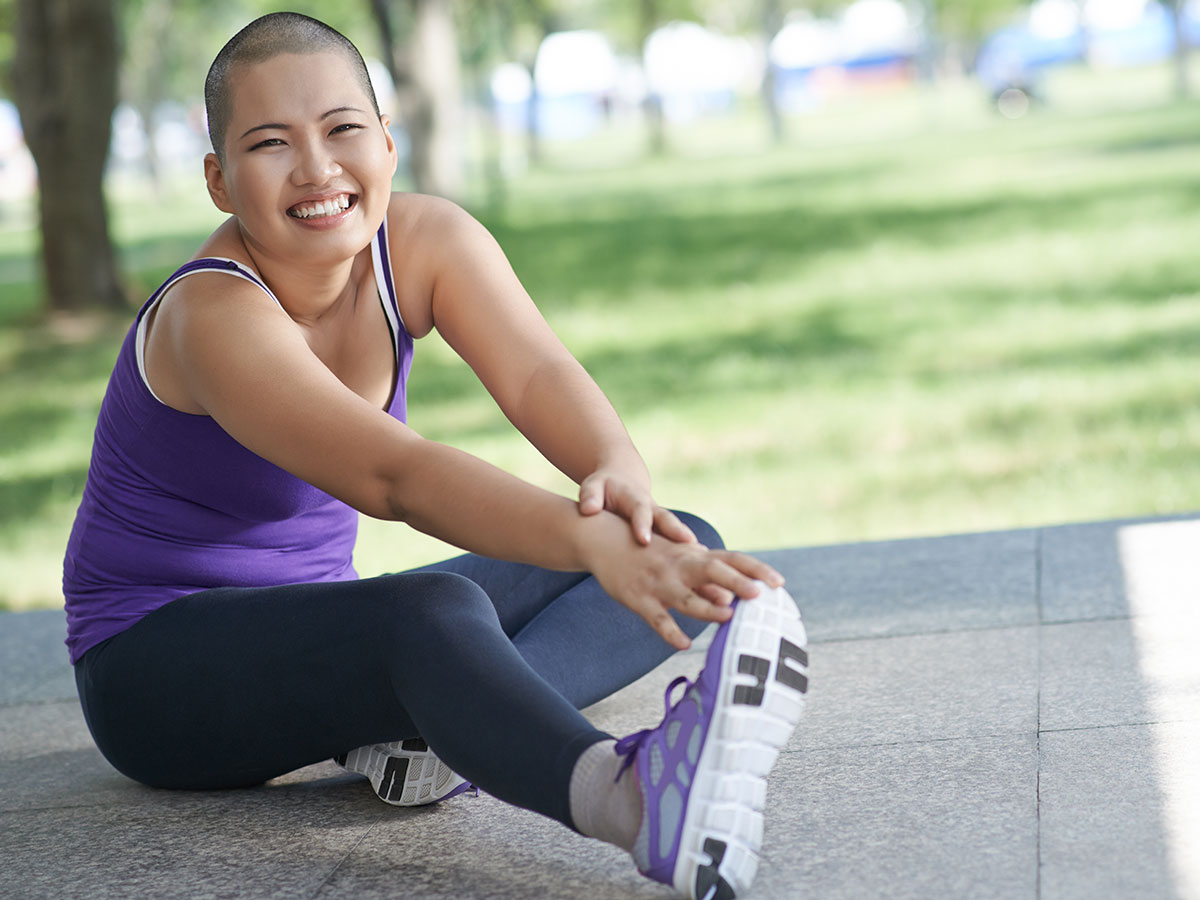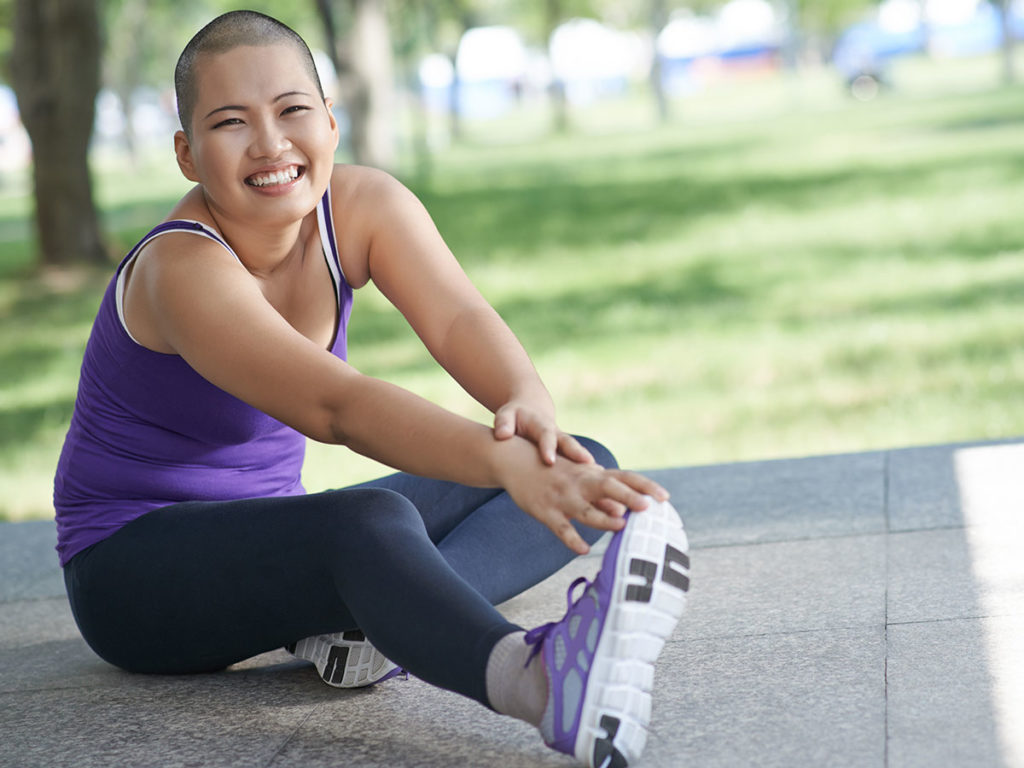

Physiotherapy and exercise play an important role in cancer care.
The Clinical Oncology Society of Australia (COSA) outline the following key points in relation to exercise in cancer care:
- All people with a cancer diagnosis should avoid inactivity and return to normal activities as soon as possible following diagnosis i.e. be as active as current abilities and conditions allow..
- All people with a cancer diagnosis should participate in regular physical activity. The aim is to reach and maintain:
- At least 150 minutes of moderate-intensity or 75 minutes of vigorous-intensity aerobic exercise (e.g. walking, cycling, swimming, running) each week; and
- Two to three resistance exercise sessions (e.g. Pilates, lifting weights, TheraBand) each week involving moderate- to vigorous-intensity exercises targeting the major muscle groups
- Accredited exercise physiologists or physiotherapists with experience in cancer care are the most appropriate health professionals to provide and deliver tailored exercise programs to people with cancer.
The PINC (Women’s) and STEEL (Men’s) Cancer Rehabilitation Programs are rehabilitation and fitness programs that consist of prescribed, individualised rehabilitation dependent on the patient’s type of cancer, age, fitness level, stage of recovery, type of cancer treatment and the side effects. These programs are delivered by certified physiotherapists and are individualised, one-on-one, relevant and patient orientated. They transition the patient from recovery to fitness and involve the long-term incorporation of exercise into their lifestyle.
Recovery and exercise recommendations of the PINC and STEEL Cancer Rehabilitation Programs are:
- A functional assessment by a cancer rehabilitation physiotherapist for the best individualized physical rehabilitation treatment available
- To avoid inactivity to prevent deconditioning
- To decrease stress by engaging in enjoyable activities and catching up with friends
- Prioritise exercise as exercise increases cancer survival
- Include resistance training as it has the potential benefits of:
- Increased strength
- Improved range of motion
- Weight management
- Maintenance of muscle and bone health
- Improved balance and reduced falls risk
- It also helps to reduce stress, fatigue, anxiety and depression leading to improved feelings of well-being, confidence and control of one’s life
- Listen to your body by getting signs & symptoms checked by a health professional e.g. pain, swelling, pins and needles, signs of infection and stiffness
- Rest in moderation but seek help for cancer-related fatigue management
- Set achievable goals both short and long-term with the help of your physiotherapist
Exercise is the number one treatment for cancer-related fatigue (CRF) – i.e. a persistent, debilitating and overwhelming feeling of exhaustion which cannot be explained by other physiological means, or relieved by sleep or rest. CRF remains one of the most prevalent and troublesome side-effects experienced by people undergoing, and following cancer treatment and can significantly impact physical function, psychosocial health and quality of life. It is most effectively managed by exercise of at least moderate intensity.
Exercise is safe for people with lymphoedema – i.e. the retention of fluid in the tissues, appearing as swelling, resulting from a compromised lymphatic system. Compromise of this system can occur from cancer and the treatments for cancer, in the form of the removal or damage to lymph nodes and vessels, or an increase in fluid load. A recent systematic review found exercise had no effect on lymphoedema volume or symptoms for any type of exercise (aerobic, resistance and aerobic plus resistance) – i.e. exercise does not make lymphoedema worse.
The Physio Clinic Oncology Rehabilitation Team consists of:
- Natalie Bukojemski – Certified PINC (Women’s Cancer) Physiotherapist
- Alistair Hayes – Certified STEEL (Men’s Cancer) Physiotherapist
- Olivia Jones – Certified Lymphoedema Therapist & Physiotherapist
By Alistair Hayes | Certified STEEL (Men’s Cancer) Physiotherapist
References
- COSA Position Statement on Exercise in Cancer Care, Version 3, December 2020 (https://www.cosa.org.au/media/332757/cosa-position-statement-v3-dec2020-web-final.pdf)
- 5 facts: Cancer and exercise (https://australian.physio/inmotion/five-facts-cancer)
- Singh B, Disipio T, Peake J, Hayes SC. (2016). Systematic review and meta-analysis of the effects of exercise for those with cancer-related lymphedema. Archives of Physical Medicine and Rehabilitation, 97, 302-15.























